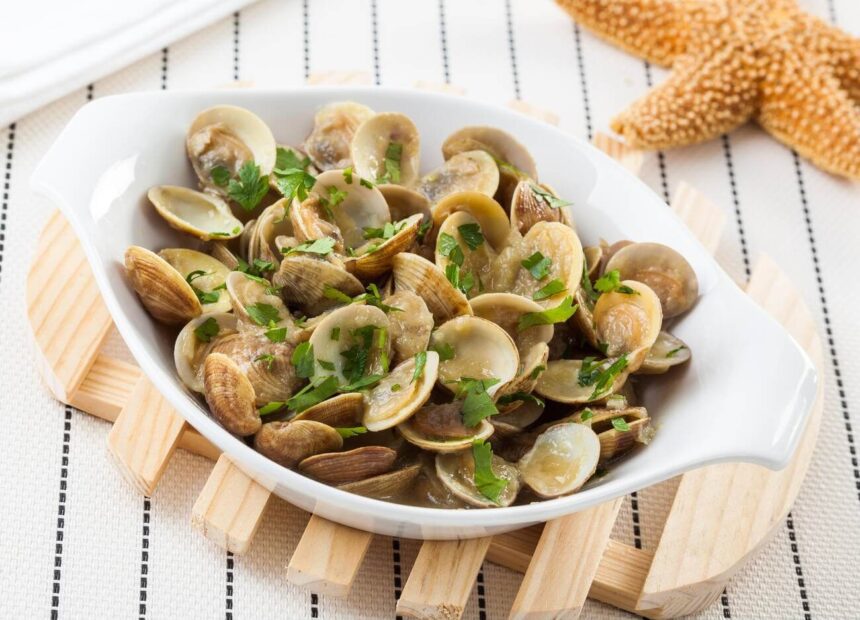Alright, fellow feline enthusiasts, let’s dive whiskers deep into the seafood sensation that’s been causing a purr-plexity among cat owners – clams! We all know cats are finicky about their food, but what about these little ocean nuggets? Can cats eat clams without getting into a fishy situation?
Unveiling the Shell Game
Picture this: Your cat, eyes gleaming like a pirate spotting a treasure chest, staring at a plate of clams. But before you unleash the aquatic feast, let’s break down the shell-shocker – Can Cats Eat Clams? The answer, my friends, is a resounding YES. Clams are like the VIPs of the underwater buffet for our furry friends.
Clams 101
So, what’s the deal with clams? These little sea wonders are marine bivalve mollusks with shells that are smoother than a cat’s purr. Unlike oysters, they are the cosmopolitan globetrotters, living in both fresh and salt waters. Now, humans usually steam or devour them raw, but remember – your cat ain’t into raw seafood.
The Cat-Clam Connection
Here’s the scoop: Clams are not just a delight for your palate; they’re a protein powerhouse. And we all know our furballs need their daily dose of animal protein. But hold your tuna cans, my friends, because there are a few meow-ster rules before your cat goes on a clam feast.
Can cats eat clams? Risks and Benefits
The Cat’s Allergy
While clams can be a treat, let’s not forget about allergies. Cats can be as sensitive as your grandma’s antique porcelain. If your kitty shows signs of a tummy ruckus, skin drama, or some awkward scooting, it might be the clam culprit. Better play it safe and consult your vet before opening the clam party.
Cooking Up a Storm
Now, here’s the scoop you shouldn’t overlook – cook those clams like you’re auditioning for a Michelin star. No half-cooked drama. Undercooked clams can be a cat’s digestive nightmare. So, make ‘em soft and tender. No Michelin-star cat chefs here, but a well-cooked clam is a happy cat.
Spice Alert!
Hold the salt, onion, and garlic, chef! Cats are not fans of seasoning drama. In fact, these kitchen staples are a no-no. They’re like the villains in the cat culinary world, causing food poisoning and serious belly drama. Your cat might be fur-ious if you sprinkle these villains on her clam feast.
Shell Shock and Awe
Picture this – your cat, a warrior in a seafood battle, facing a clam shell. Hold up! Clam shells are a big NO. They’re not cat-friendly. Why? Because they’re like mini landmines for choking and causing belly havoc. Deshell those mollusks before serving – your cat will thank you.
The Purr-tential Benefits
Now, let’s shift gears from cautionary tales to the purr-tential benefits of this underwater delicacy.
Taurine Triumph
Ever heard of taurine? It’s not a magic spell, but it’s pretty close for your cat’s health. Taurine is an amino acid superhero that supports your cat’s immune system, digestion, and even plays a role during the pregnancy saga. Guess what? Clams are loaded with taurine. So, it’s a win-win.
Protein Power Play
Cat parents, gather around. Protein is the VIP guest in your cat’s dietary gala. Cats are like little carnivorous connoisseurs, and clams bring 12 grams of protein to the table. Not too shabby, considering your cat’s usual suspects are beef, turkey, and chicken. Clams – the exotic treat in her fancy feast.
Omega-3 Odyssey
Now, let’s talk about omega-3 fatty acids – the unsung heroes in the cat health saga. They combat inflammation and play defense against diseases like arthritis, kidney issues, and even the big C – cancer. Clams, the ocean’s gift, pack a punch with 241 milligrams of omega-3. It’s like a health elixir for your cat, minus the wizardry.
Can cats eat Raw Clams?
Hold onto your furballs – raw clams are a big no-no. Why? Because they come with a side of thiaminase, an enzyme that plays naughty with thiamin in your cat’s body. Thiamin is like the superhero vitamin, preventing neurological chaos. Raw clams may sound rebellious, but they’re a breeding ground for bacteria, the real villains in this saga.
Can cats eat Canned Clams?
Imagine your cat as a pirate, eyeing a can of clams like buried treasure. Not so fast! Canned clams are like the sirens of the sea, tempting your cat with high sodium levels. Your cat might survive a nibble or two, but it’s a slippery slope. Cats shouldn’t gulp more than 41 milligrams of salt daily. Canned clams? 95 milligrams. Yikes!
Can cats eat clam Juice?
Now, let’s talk about clam juice – the brothy aftermath of a clam steamy affair. Is it safe for your cat? Drumroll, please – it is! Clam juice can be a liquid delight for your furball. Why? It’s a hydrating option for those water-shy cats. Plus, it’s a nutrient cocktail with a hint of protein, taurine, and omega-3. Fancy, huh?
Can cats eat clam chowder?
Cats and clam chowder – a culinary love story or a recipe for disaster? Fear not, for cats can indeed savor the creamy delight. But hold the phone – no onions, garlic, or seasoning mischief. Cats may love to dine at the human table, but we’re not serving a seafood buffet seasoned with cat toxins. Keep it plain, keep it safe.
Conclusion
So, there you have it – the epic saga of cats and clams. Can cats eat clams? Absolutely, but with a sprinkle of caution and a dash of culinary wisdom. Clams bring a tidal wave of benefits, from taurine triumphs to protein power plays. However, tread carefully, for the ocean has its share of villains – raw rebels, canned sirens, and seasoning mischief.
Before you unveil the clam feast, consult your cat’s confidante – the vet. Your cat’s health is the treasure, and this underwater delicacy should be a treat, not a daily dive.
So, fellow cat comrades, let the clam adventure begin, but with a cat-like grace and a vet’s nod. May your cat’s culinary journey be as delightful as a clam in the ocean breeze!



